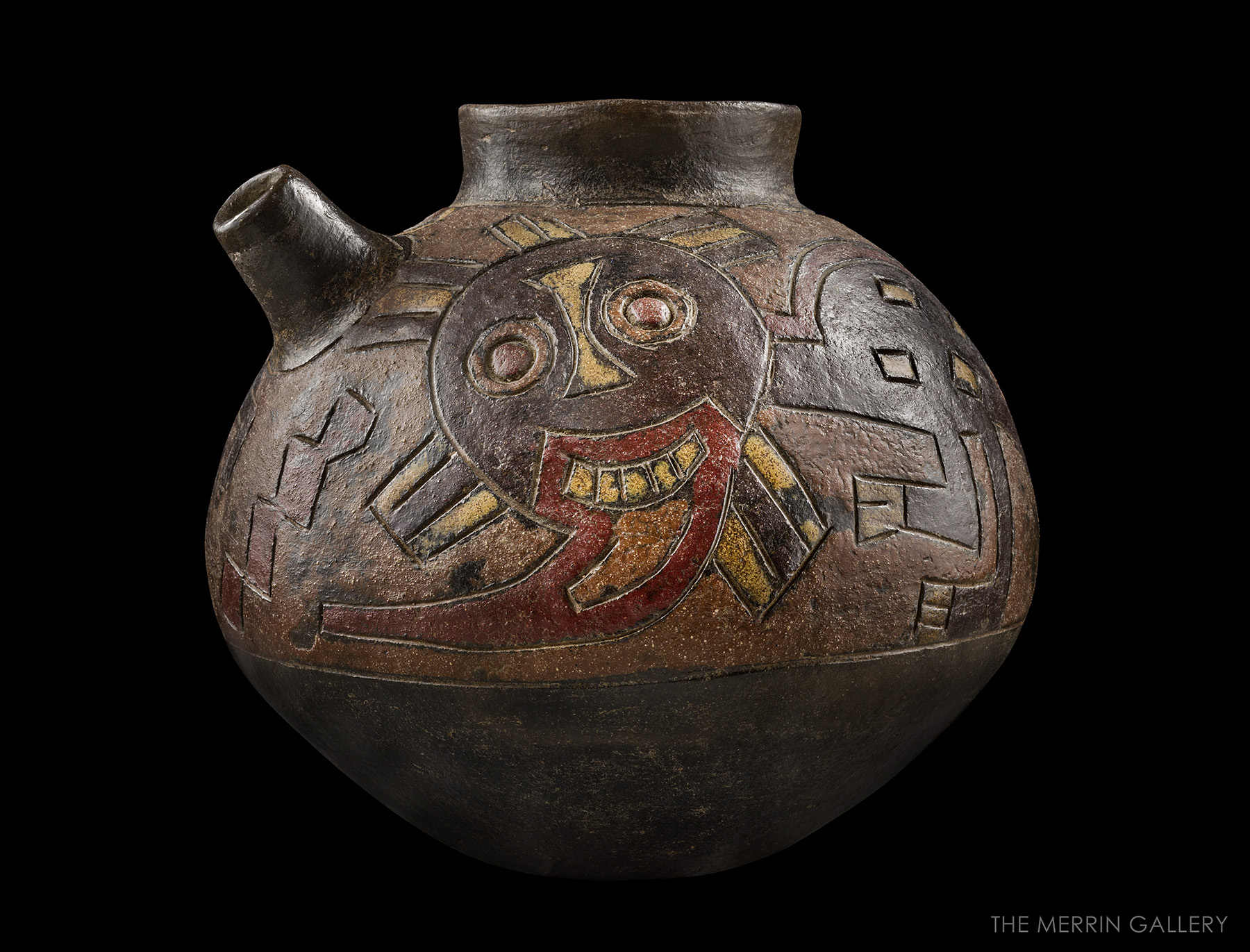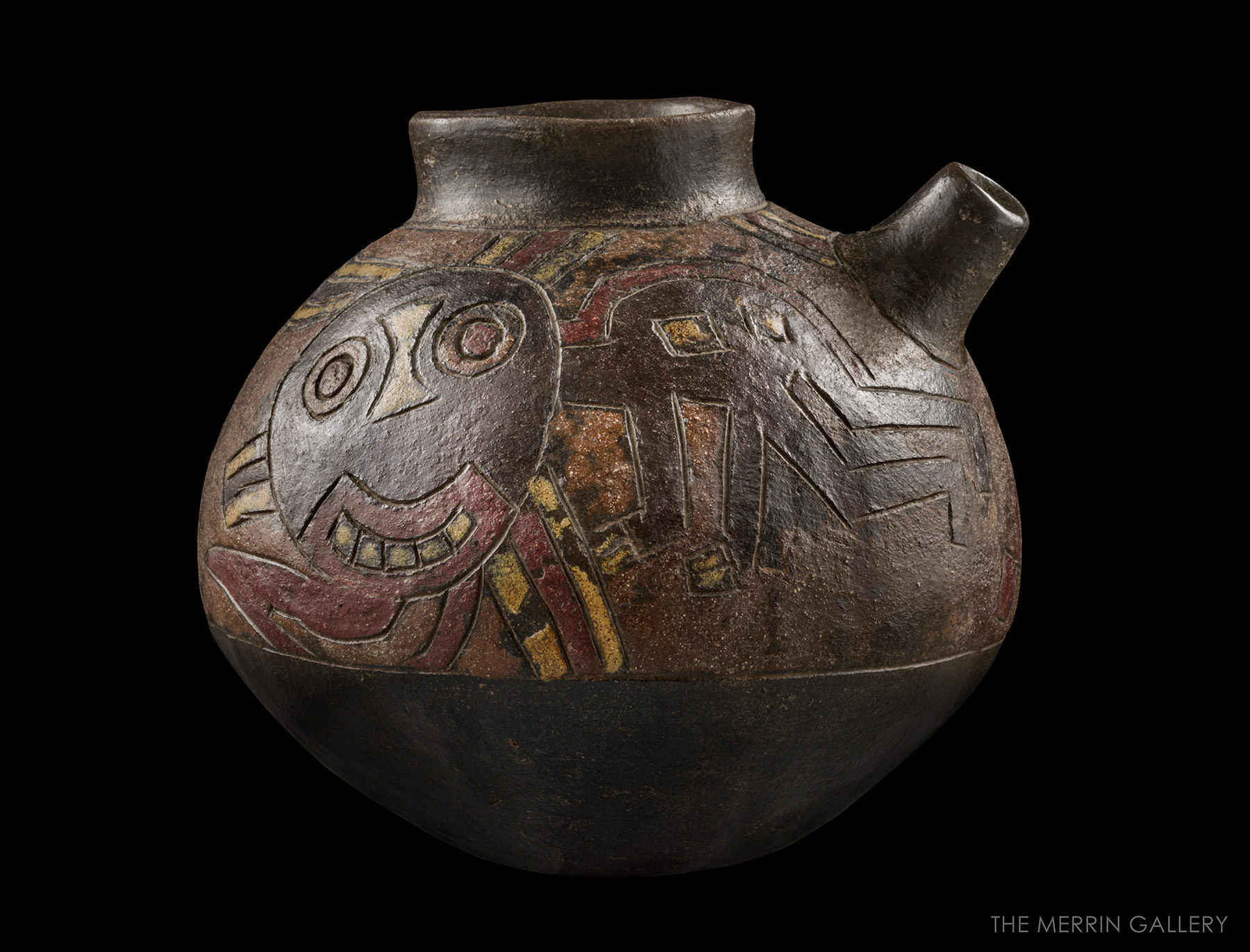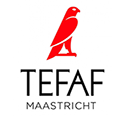Description
Spouted blackware ceramic vessel with incised surface, dark brown slip glaze, and polychrome details. The vessel is from the Paracas culture of the south coast of Peru (5th – 2nd centuries B.C.). Its round body displays decorative elements created by post-fire resin painting, a technique noted early in Paracas society. The technique consists of incising the surface prior to firing, and subsequently applying colored paint to further define the depicted image. As exemplified by this vessel, the bright colors often used with this technique include red, yellow, brown, black, and white. The artist rendered this design of felines in such a way that the animals appear to be lurking as they await their prey.
The paint used was made by mixing mineral pigments with plant resin to adhere to the surface of the ceramic. Scholars have suggested that the usage of certain pigments may indicate access to, and circulation of, the various resources needed in paint production, which came from areas outside the Paracas region. This may be indicative of trade networks.
The vessel was likely discovered in a funerary context, as members of the Paracas culture were well known for their practice of interring their dead as “mummy bundles.” This practice involved the interred individual seated in a basket, wrapped and buried in multiple layers of rich textiles, and surrounded by adornments such as jewelry, food, ceramic vessels, and more. The textiles that have come from this burial tradition are exceptionally well made in both the fineness of their construction and the bright, complex patterns that embellish them. Many of these burial items could have been used in daily life; however, in ancient cultures like the Paracas, continued veneration of the dead was very important. It is likely that such burial items were a critical element of funerary rites and Paracas conceptions of the afterlife.
(Info source: The Metropolitan Museum of Art)





